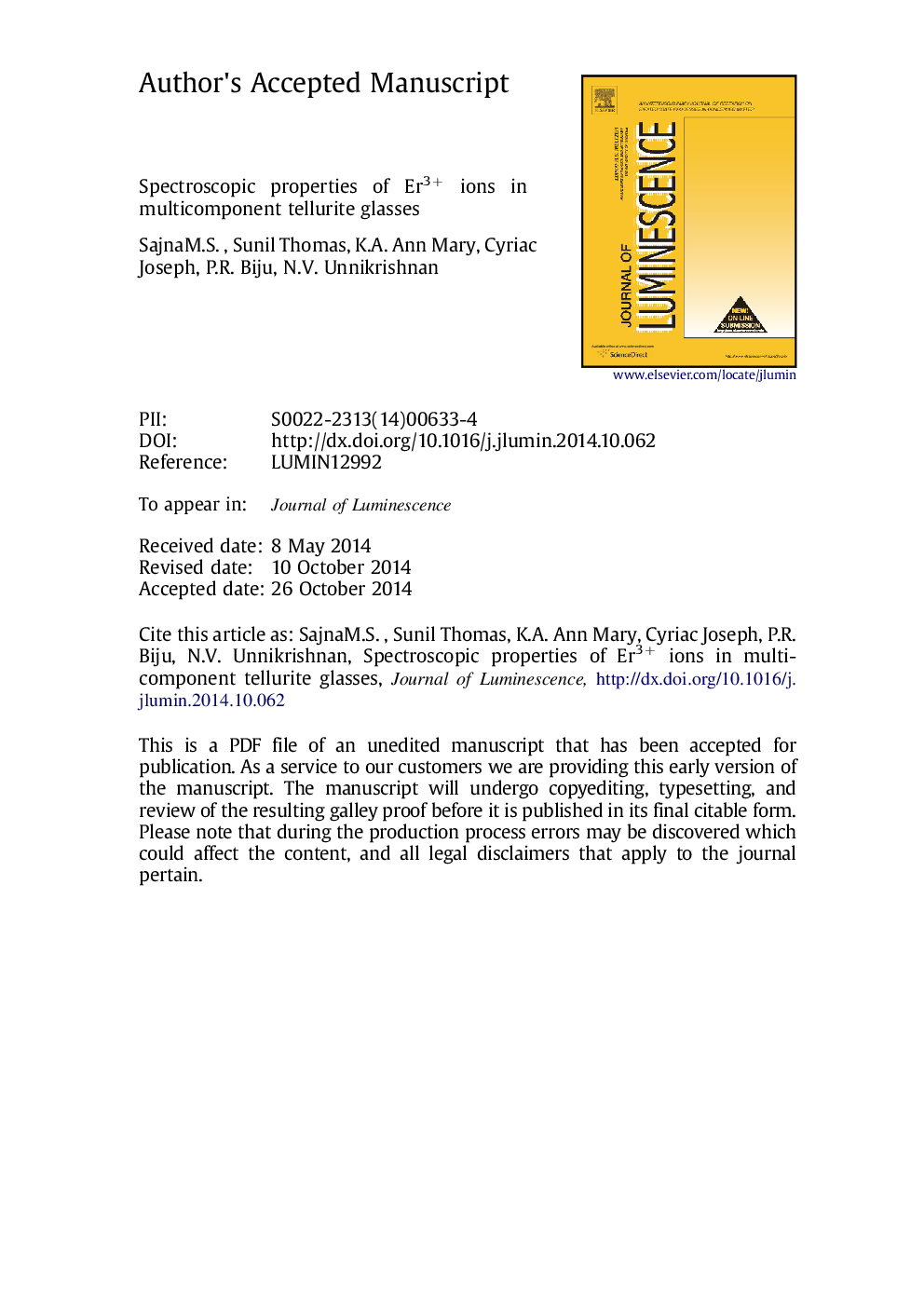| Article ID | Journal | Published Year | Pages | File Type |
|---|---|---|---|---|
| 5399607 | Journal of Luminescence | 2015 | 29 Pages |
Abstract
In the present work, multicomponent tellurite glasses were elaborated by the melt quench technique with different concentrations of Er3+ ions. Amorphous nature of all the glasses was confirmed using X-ray diffraction patterns. The thermal parameters, such as glass transition temperature (Tg) and the onset of crystallization temperature (TX), were determined by the differential scanning calorimetry. Judd-Ofelt parameters were derived for 0.5Â mol% Er3+-doped glass from the absorption measurements, and in turn, used to find the radiative properties of 4S3/2, 2H11/2 and 4I11/2 levels of Er3+ ion. A green emission corresponding to 4S3/2â4I15/2 and 2H11/2â4I15/2 transitions of Er3+ ions was observed in the glasses under investigation. Efficient green upconversion luminescence was observed under 976Â nm excitation. The emission bands centered at 529 and 543Â nm confirmed that two photons contribute to the upconversion processes. We have also analyzed the dependence of downconversion as well as upconversion as a function of Er3+ ion concentration, which shows quenching of photoluminescence intensity above 0.5Â mol% doping. From the emission spectra, CIE color coordinates of 0.5Â mol% Er3+-doped glass was examined. Fluorescence decay curves for the 4S3/2â4I15/2 transition for all the doped glasses have been measured and analyzed. Absorption cross-section and calculated emission cross-section, using the McCumber method, for the 4I13/2â4I15/2 transitions were evaluated and discussed.
Keywords
Related Topics
Physical Sciences and Engineering
Chemistry
Physical and Theoretical Chemistry
Authors
M.S. Sajna, Sunil Thomas, K.A. Ann Mary, Cyriac Joseph, P.R. Biju, N.V. Unnikrishnan,
